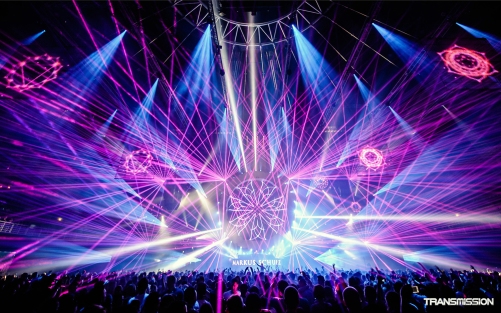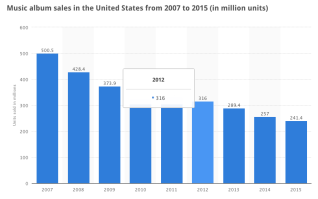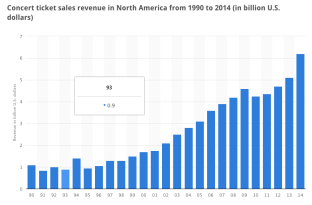
Electronic dance music (EDM) is not a new genre of music that’s popped up in the last several years. Hit EDM artists today such as Calvin Harris, David Guetta, and Tiësto have been around since the late 1980’s, when the disco era of music ended. But suddenly these artists, amongst a growing number of others, have been making the top charts these past years, and there doesn’t appear to be an end to their success anytime soon. In fact, the electric or trance sound of EDM has been creeping into more and more modern day American music.
Currently there are eight songs on Spotify’s Top 50 Global Hits that were created by EDM artists. Music dance festivals have quadrupled in capacity size since 2009. David Guetta leads Spotify as the most followed music artist, ahead of Rihanna by 1.5 million. Huge pop stars such as Justin Bieber and Nicki Minaj are doubling up with EDM artists because of the electronic popularity that seems to keep growing. From 2013 to 2014, interest in EDM shot up 76%; no doubt even more so from 2014 to 2015. In the year of 2015, Calvin Harris’ total earnings amounted to $66 million. The industry itself is worth $6.9 billion. North America represents $2 billion of that estimate. Wow.
Without a doubt, EDM is booming with popularity, especially in the U.S.
But how has EDM become so popular? Why do people find EDM so appealing? I attribute it’s success to social media and the infectious pleasure young people find at music venues.
Success today, at least for pop culture, is measured in number of likes, hits, views, followers, retweets, shares, and comments. Knowledge about everything today is shared online through social media. EDM collaborations with other popular music artists may have assisted EDM to get to its position in the music world today, but the Internet’s social advertising played an essential role. An EDM artist can create a new track, post it on social media, and it will become accessible all around the world. Connections for gigs or record deals are made via Facebook or Twitter because an event organizer or recording director saw an artist’s work. And what do these organizers and directors look for? They want what their consumers want, and that’s fun, danceable music.
EDM is an umbrella genre; it encompasses house, trance, dubstep, trap, drums and bass, etc. What all these sub-genres hold in common is that they are all danceable. Artists build up tension towards what is known as the “drop” to a song, when the sound is distorted and produces a huge, energetic response in the crowd — it is this “drop” that listeners anticipate most. Whether vocals are added or not, people feel the rhythm and beat generated by the DJ and want to dance. Generally EDM is very upbeat, and I think it is the “dance” factor in “Electronic Dance Music” is what appeals to the masses. EDM music was created and is meant to be played at parties, clubs, and festivals with the glaring light shows and holographic projections. It’s a genre that demands a live audience.
Therefore, in a time when annual record sales have reached an unheard low, tickets for music festivals have shot up and are also the main source of revenue for EDM artists (see graphs below). Nightlife in 2014 was 26% EDM related and the 12 largest electronic clubs in Las Vegas pulled in a revenue of $500 million. EDM venues are so popular, it’s ridiculous. This is where people have been putting all their extra money?


There doesn’t seem to be an end to the EDM genre anytime soon. As society becomes more technologically advanced, music that matches also makes sense. Pop music will continue to incorporate electronic dance aspects until EDM becomes the new popular music genre. Maybe once it reaches that peak, then another underground genre will rise and take its place. But for now and a bit into the future, I see EDM dominating the music world.
Graphs from statista.com
